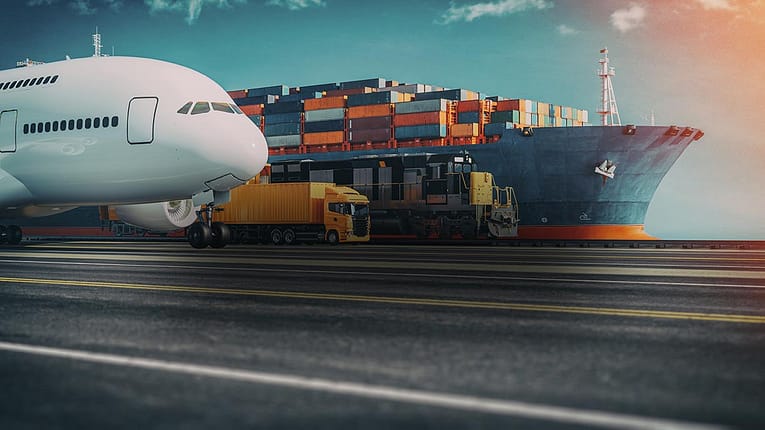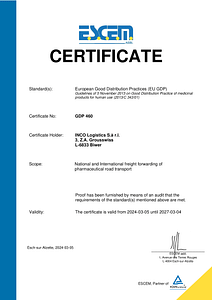In logistics, the term “long-distance transport” refers to the transportation of goods or people over longer distances. These are transportation services that take place between different regions, cities, countries or even continents. Thus, it differs from local transport, which takes place on shorter routes within a given city or region.
In freight transport, long-distance transport involves the transportation of goods and freight over long distances. This can be done by various modes of transport, such as road (by trucks), rail (by freight trains), ship or even air. Long-distance transport is particularly important for international trade and the global economy, as it enables products and goods to be transported between different countries and continents.
In passenger transport, long-distance transport refers to the carriage of passengers over longer distances. This is often done by long-distance trains, long-distance buses or airplanes. Long-distance services are particularly popular with travelers who need to cover long distances, whether for business or tourism.
Logistics here is a complex task that requires careful planning, efficient route optimization, adherence to delivery deadlines, safety of goods and travelers, and smooth handling of transport processes. Modern technologies, such as GPS tracking, help make long-distance transportation more efficient and transparent by providing real-time information about the location of goods and vehicles. Reliable long-distance logistics is of great importance to companies and society as it ensures the smooth supply of goods and the mobility of people.
Which modes of transport are most frequently used for long-distance transport?
Long-distance transport uses different modes of transport, depending on the type of goods, distance, time constraints and costs. The most frequently used modes of long-distance transport are:
- Road transport (truck): Road transport is one of the most common options for long-distance transportation, especially for transporting goods over medium to long distances within a country or between different countries. Trucks are flexible and can access most roads and road networks, making them a versatile choice.
- Rail transport (freight trains): Rail transport is particularly attractive for transporting large quantities of goods over very long distances. Freight trains can carry heavy loads and are generally more efficient than road transport, especially over longer distances. They are often used for transportation between countries or from ports to inland locations.
- Sea transport (ships): For long-distance international transport, especially over long distances and oceans, sea transport is crucial. Container ships transport a wide range of goods and commodities between continents and major trading ports.
- Air transport (aircraft): Air transport is often used for particularly urgent deliveries and for transporting high-value or perishable goods. Aircraft can cover long distances in a short time and offer a fast and reliable way to transport goods worldwide.
These four modes dominate long-distance transport in logistics, but there are also other means of transport such as barges, pipelines and intermodal solutions that are used depending on specific requirements and regional conditions. The choice of the appropriate mode of transport depends on factors such as cost, speed, safety, type of goods and geographical location. Logistics companies often use a combination of these modes to find the best solutions for their customers.
What advantages does long-distance transport offer compared to local transport?
Long-distance and local transport each have their own advantages and disadvantages, depending on specific requirements and needs. Here are some of the advantages that long-distance transport offers compared to local transport:
- Longer distances: The most obvious advantage of long-distance transportation is that it is suitable for transporting goods or people over longer distances. While local transport is limited to shorter distances within a given region or city, long-distance transport enables transportation over several hundred or even thousand kilometers.
- Efficiency: For transporting large quantities of goods over long distances, long-distance transport is often more efficient than local transport. Transport modes such as freight trains or container ships can carry a large amount of freight at once, improving the efficiency of transport processes.
- Cost savings: Due to higher efficiency and economies of scale, the cost per transported unit can tend to be lower in long-distance transport than in short-distance transport. This can be particularly advantageous when large quantities of goods have to be transported over long distances.
- Global trade: Long-distance transport plays a crucial role in global trade, as it enables goods to be transported between countries and continents. Without long-distance transport, international trade would not be possible to the extent we know it today.
- Time savings: although local transport is generally faster when it comes to moving goods within a limited geographic region, long-distance transport can be advantageous for longer distances, as it can use more direct and faster routes in many cases, such as aircraft in air transport.
- Specialization: Long-distance transportation allows companies and logistics service providers to focus on specialized areas that require extensive regional or global reach. This enables them to expand their expertise in specific markets or transport routes.
It is important to note that local and long-distance transportation often interact and complement each other in logistics. The decision for one of the two types of transport depends on the specific requirements of the transport, the distance, the type of goods and the costs. For many companies, a combination of local and long-distance transport is crucial to making their supply chains efficient and reliable.
How is the safety of goods and passengers ensured in long-distance transport?
The safety of goods and passengers in long-distance transport is crucial to ensure smooth and risk-free transportation. There are various measures and standards taken by logistics companies, freight forwarders, transportation service providers and governments to ensure long-distance transportation safety. Here are some of the most important aspects:
- Vehicle safety: Vehicles used in long-distance transport must be regularly maintained and checked for their technical condition. This applies in particular to trucks, freight trains, ships and aircraft. Good maintenance and regular inspections are critical to ensure that vehicles meet safety standards.
- Cargo securing: To ensure the safety of goods during transport, they must be properly packed and secured. Inadequate load securing can lead to accidents in which the goods are damaged or even fall onto the road and endanger other road users.
- Training and Education: Drivers, captains, pilots, and other employees engaged in long-distance transportation must receive appropriate training and education. This includes knowledge of safety guidelines, traffic rules, and emergency procedures to respond appropriately in the event of an accident or emergency situation.
- GPS tracking and telematics: Modern technologies such as GPS tracking and telematics make it possible to track the location of vehicles and goods in real time. This allows irregularities or safety problems to be detected and corrected at an early stage.
- Security checks and inspections: Security checks and inspections are carried out at airports, ports and border crossings to ensure that the transported goods comply with applicable regulations and do not pose a threat to public safety.
- Safety regulations and laws: Governments establish safety regulations and laws that must be followed by carriers and freight forwarders. These regulations serve to protect goods, travelers and the environment.
- Insurance: Companies involved in long-distance transport often have insurance to cover themselves against possible damage, accidents or losses. Adequate insurance coverage is critical to minimizing long-distance risks.
The combination of these measures and standards can ensure long-distance safety and minimize the risk of accidents and losses. Safe long-distance transport is not only important for the protection of goods and travelers, but also contributes to the reliability and efficiency of the entire logistics industry.
Long-distance traffic
In logistics, the term “long-distance transport” refers to the transportation of goods or people over longer distances. These are transportation services that take place between different regions, cities, countries or even continents. Thus, it differs from local transport, which takes place on shorter routes within a given city or region.
In freight transport, long-distance transport involves the transportation of goods and freight over long distances. This can be done by various modes of transport, such as road (by trucks), rail (by freight trains), ship or even air. Long-distance transport is particularly important for international trade and the global economy, as it enables products and goods to be transported between different countries and continents.
In passenger transport, long-distance transport refers to the carriage of passengers over longer distances. This is often done by long-distance trains, long-distance buses or airplanes. Long-distance services are particularly popular with travelers who need to cover long distances, whether for business or tourism.
Logistics here is a complex task that requires careful planning, efficient route optimization, adherence to delivery deadlines, safety of goods and travelers, and smooth handling of transport processes. Modern technologies, such as GPS tracking, help make long-distance transportation more efficient and transparent by providing real-time information about the location of goods and vehicles. Reliable long-distance logistics is of great importance to companies and society as it ensures the smooth supply of goods and the mobility of people.





